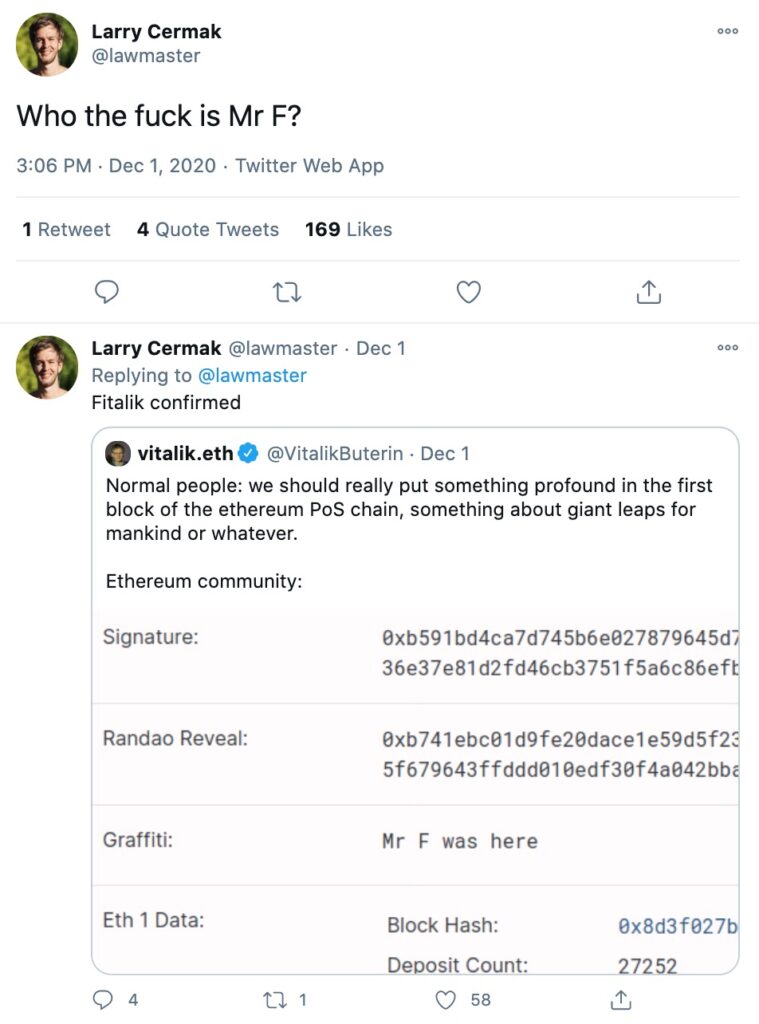Ethereum 2.0 Is Here. What Does It Mean?

This blog post will cover:
- What is ETH 2.0?
- Ethereum 2.0 roadmap
- How did the launch go?
- ETH price
- Conclusion
The Crypto community was waiting for the Ethereum network upgrade to its second version. The launch of Ethereum 2.0 (also called “Serenity”) finally happened on December 1, 2020 (it was postponed a couple of times). Some people, for example, Ryan Watkins (researcher of Messari company), stated that Ethereum 2.0 was a greater catalyst than BTC halving.

So what does this update mean and why was it one of the most awaited events at the timeline of Crypto history? Let’s figure it out.
What is ETH 2.0?
ETH 2.0 is a large-scale update of the basic blockchain network, during which the transition from Proof-of-Work to Proof-of-Stake will be implemented. The PoS consensus algorithm should replace the outdated PoW that has its problems, and developers are moving the platform to a progressively modern algorithm to improve it. There are several reasons for this:
- Proof-of-Work is economically inefficient and consumes a huge amount of electricity;
- Less investment in mining as there is no need to invest in expensive equipment;
- Opportunities for network scaling and transaction speed increase;
- PoS is far more environmentally friendly than classic mining;
- Proof-of-Stake encourages investors to hold crypto.
The Ethereum 2.0 is designed to raise the speed of transaction as well as make the network much more efficient and scalable. Ethereum 2.0 and Ethereum have a significant distinction, a necessity to avoid the issues caused by users’ quantity rise.
Developers have introduced a 1st step — building on a fresh consensus algorithm where the blockchain members negotiate on every block ahead of producing it. Right now, the whole process is secured by the miners. Later, the validators will do it instead. To become a validator of the network, you need to block the interest of ETH currency in the stakes. Validators are selected according to the number of coins that are blocked and the time they are blocked. The award is planned to be paid to validators through a smart contract.
The 2nd step is meant to build the Fragmented chains. Nowadays the transactions traverse just 1 blockchain, but when the upgrade is out, they will add sixty four extra chains. It will make transactions much faster. Also, Ethereum 2.0 will improve the Ethereum security shield against 51% attacks. These attacks mean that someone controlling the network has an opportunity to add fraud modifications into the system. The launch of this update is predicted for 2023.
Ethereum 2.0 roadmap
According to the Ethereum 2.0 roadmap, at least three main stages will be implemented, after which the network will function in full:
Phase 0 is already launched. During this stage, the Beacon Chain is being tested and the validator mechanisms are being debugged. Specifically this phase started on December 1, 2020. Beacon Chain is the main component of the Ethereum 2.0 process. With the help of this blockchain, the ETH network moves to the PoS consensus algorithm. Now the holders of ETH have a chance to block currency in staking and to become members of a network to play validators themselves for getting rewards. There are 10 mln ETH in the smart contract. The advantage of this algorithm is its high energy efficiency. Transaction security in the current version is carried out by miners who provide computing power of their video cards for solving mathematical problems on the Proof-of-Work (PoW) algorithm. The disadvantage of this algorithm is high power consumption.
The next points of PoS started performing over the phase 0:
- Managing a set of stakers;
- managing staker funds;
- random number generator, helping to select block creators and staking curators;
- voting stakers for block size proposals;
- rewarding and assigning fines to stakers.
Phase 1 release is planned to be out in 2021. At this stage it is planned to integrate sharding, which is aimed to improve network scalability. Thus, the network will be divided into 64 separate blockchains, due to which the bandwidth will increase proportionally.* Sharing is a scalability mechanism that will improve the bandwidth of the blockchain.
Phase 1.5. During this phase Ethereum 1.0 will merge with Ethereum 2.0. After this phase, the Ethereum 1.0 chain will become a shard of the Ethereum 2.0 PoS blockchain.
Phase 2 is planned to be launched in 2021 or 2022. Within this phase, transfers, accounts, coin withdrawals, etc. will be added. More information may be found on Ethereum.org.
Vitalik Buterin has also posted a tweet with his vision of the ETH 2.0 development:
December 3, 2020 the “father” of Ethereum, Vitalik Buterin, has publicized the fresh roadmap endorsement. It’s become adaptable and removed the phase numeration. Every phase feature is separate now and covers the updates that took place in Ethereum. Renewed roadmap supplies us with all the progress and gives a full review of the project’s plans and goals as well as the rough deadlines for implementing the updates.
The main points of the further plan are switching Ethereum network to PoS and adding Database Sharding. These features were earlier planned for phases 1 and 1.5. But a major change noticed in a renewed roadmap is the fact that 3 phases are completely separated and could be realized simultaneously. Separating the database in order to distribute the load is called sharding. Talking about Ethereum, this process will lower the load of the network as well as higher the transaction quantity per second due to making new chains of blocks.
Update called “The Merge” is planned for 2022. It will make the Beacon Chain and Ethereum main network work together. Such a union is meant to finish the PoW and start a new age of Ethereum built on PoS that’s also used in Beacon Chain.
The central element of a next upgrade level is Shard chains. They’re scheduled for 2023 and will let Ethereum use more features for data storage and access. When the extra shards are added, the Ethereum network will be secured by Beacon Chain and PoS. It will help to use the main network to build up Shard chains based on 2nd level solutions which, in turn, raise the scalability.
In January 2022, the Ethereum Foundation said that the name of the upgrade won’t stay “Ethereum 2.0”, although the community has gotten used to it already. However, the renovation was designed to emphasize that Ethereum 2.0 is an updated version of Ethereum, but not a fresh network at all.
How did the launch go?
As you already know, the launch of Phase 0 happened on December 1 as it was planned. The required balance threshold of the deposit contract of 524,288 ETH and 16,384 validators in the network was exceeded a week earlier. In the first days after the launch, users have already contributed over 1 million ETH to the deposit contract, and the number of active validators has beat 23,000.
On the second day, one of the network validators lost part of the stake for block distortion. The validator was fined 0.25 ETH.
The first block (genesis-block) was followed by the message “Mr F was here” and made the community members curious about this mysterious person.

The fourth block included the message "Welcome to a New Beginning".
After the event, some crypto wallets started to open access for ETH 2.0 staking, i.e. MyEtherWallet has opened access to ETH 2.0 staking through the Staked service.
Also the Binance crypto exchange platform announced the launch of Ethereum 2.0 staking. The service is available from December 2.
Staking support was also reported by Coinbase and Huobi exchange platforms. KuCoin exchange not only launched a staking service, but also announced the opening of trading on ETH2 paired with ETH. It can be expected that over time, the new token staking service will appear on most major cryptocurrency exchanges.
ETH price
Ethereum rate has grown significantly shortly before the launch of Phase 0, however, immediately after the release of the genesis block, the cryptocurrency almost instantly fell by 8% - from the moment when people could buy it for $615 to $574 (according to the data from Coinmarketcap.com).
Ethereum 2.0 has been highly anticipated and widely discussed by blockchain fans. Proof-of-Stake and sharding should dramatically improve scalability, security, and availability. For ETH holders, Ethereum 2.0 provides a new opportunity to participate and receive rewards for maintaining the network.
Conclusion
The upgrade of the Ethereum network allows the platform to advance in processing speed and transaction security as well as significantly reduce power consumption. The transfer to PoS could make the exchange rate grow. In three or four months after the upgrade release, the value of ETH may surpass $6000 and in half of a year or twelve months it could reach $10000. The quantity of released ETH will be diminished, which could cause a market supply shortage. The community size of Ethereum can easily be enlarged due to the eco tendency, which PoS is famous for. However, let's see how it goes! SimpleSwap will keep you updated about all the Ethereum upgrades!

